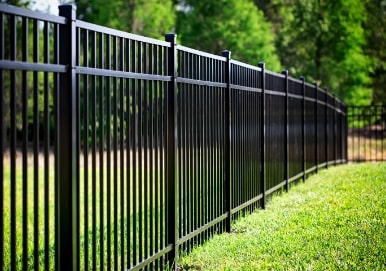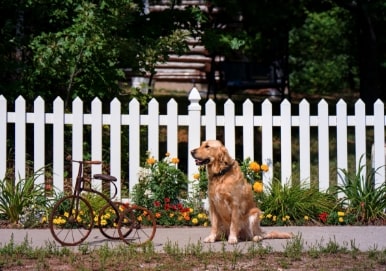A well-built wooden fence brings privacy, security, and aesthetic value to any property. To get the best results, it is important to understand the main structural elements that hold everything together. Knowing the purpose of these wood fence parts helps in choosing the right materials and design for long-lasting durability.
Six Key Wood Fence Parts
Fence Posts
Fence posts serve as the foundation of any wooden fence – anchoring the structure securely into the ground. These vertical supports are typically made of treated wood to resist rot and decay. The depth and spacing of posts directly affect the overall stability. This makes proper installation a key step in fence construction.
Post caps are often added for decorative appeal and to shield the posts from weather damage. Some homeowners opt for metal or composite caps to extend the lifespan of the wood. Beyond function, these additions give fences a polished look while preventing moisture-related deterioration.
Pickets
Pickets form the most visible part of a wooden fence. They influence its style and level of privacy. They are attached to the rails and can be spaced differently depending on the desired design. Standard styles include dog-ear, flat-top, and board-on-board, each offering a unique aesthetic.
Thickness and material selection play a role in durability. While thinner pickets may be budget-friendly, thicker options deliver better longevity. Properly treated wood helps resist insects and moisture and keeps the fence looking its best for years.
Rails
Rails run horizontally along the fence and connect the pickets to the posts. They play a structural role by distributing weight and keeping the fence stable. Most wooden fences have two or three rails – depending on the height and style of the design.
The choice of wood for rails should balance strength and flexibility. Some homeowners prefer using cedar or pressure-treated lumber to prevent warping. Well-installed rails help maintain a uniform appearance and extend the life of the fence.
Cap Board
A cap board is an optional but beneficial addition that runs along the top of a wooden fence. It creates a finished look while protecting the exposed tops of pickets from the elements. This horizontal board enhances the overall design and reinforces the structure.
Over time, water exposure can cause pickets to crack or warp. Covering them with a cap board means homeowners add an extra layer of defense against rain and sun damage. The cap board can also serve as a decorative element that ties the fence together visually.
Kick Board
A kick board, also called a mud board, is installed along the bottom of the fence to prevent direct ground contact. This piece helps protect the pickets from moisture, dirt, and potential pest damage. With pressure-treated wood, homeowners extend the lifespan of their fences.
This component is especially useful in areas prone to heavy rain or shifting soil. A sturdy kickboard absorbs wear and tear while keeping the rest of the fence intact. It is an investment that minimizes long-term maintenance and repair costs.
Trim Board
Trim boards add a decorative touch while concealing fasteners and joints. They create a cleaner appearance by covering exposed edges – giving the fence a more polished look. These boards are commonly used in high-visibility areas where aesthetics matter most.
Aside from looks, trim boards bring added reinforcement. They prevent gaps and misalignment and contribute to a sturdier fence. Homeowners looking to customize their fences often choose trim boards to enhance curb appeal without compromising durability.
Why Understanding Wood Fence Parts Matters
Knowing the different parts of a wood fence is more than just a technical detail. It helps homeowners make informed decisions. Each component serves a purpose, from structural support to aesthetic appeal. Homeowners can choose materials that enhance durability and complement their property’s style by understanding these elements.
Proper knowledge also plays a role in maintenance and repairs. Recognizing signs of wear and knowing which parts need attention can prevent costly replacements. When building either a new fence or maintaining an existing one, a clear understanding of its components leads to better results and long-term satisfaction.
A Fence That Stands the Test of Time
Choosing quality wood fence parts makes a difference in both function and style. Each component works together to create a fence that is sturdy, visually appealing, and long-lasting. For those considering alternative materials, an aluminum fence can be a low-maintenance option while still offering security and style.
If you are thinking about installing a wood fence, Good Neighbor Fence is here to help. Our team specializes in designing and building fences that blend craftsmanship with durability. Call us at (804) 737-4664 to get a quote and discuss your wood fence needs today.





